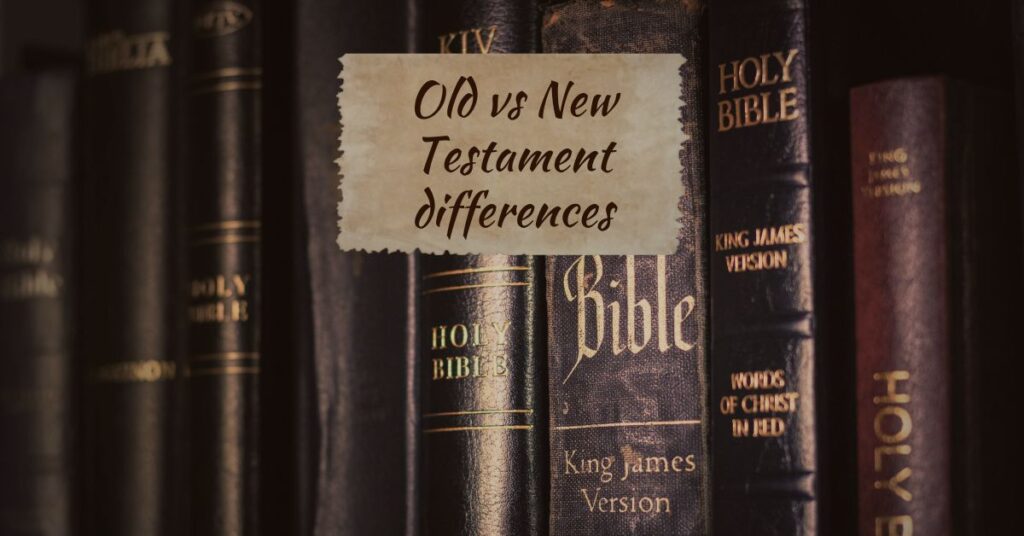The Bible is a collection of sacred texts, divided into two major parts: the Old Testament and the New Testament. While both are part of God’s inspired Word, they serve different purposes, reflect different times, and reveal God’s relationship with humanity in unique ways. Understanding the Old vs New Testament differences is essential for anyone seeking to grow in faith, apply scripture correctly, and deepen their walk with Christ.
Let’s break it down in simple terms.
Why Understanding the Differences Matters
Many Christians read both Testaments without realizing how differently they function. Here’s why knowing the distinction matters:
- Helps interpret scripture accurately
- Deepens your understanding of God’s plan
- Reveals the transition from law to grace
- Shows how prophecy is fulfilled through Christ
Old vs New Testament: Key Differences at a Glance
| Aspect | Old Testament | New Testament |
|---|---|---|
| Time Period | Before Jesus Christ | During and after Jesus’ life on Earth |
| Main Focus | God’s covenant with Israel | Salvation through Jesus Christ |
| Covenant Type | Old Covenant (Law) | New Covenant (Grace) |
| Key Figure | Moses (giver of the Law) | Jesus Christ (Savior and Redeemer) |
| Language | Originally in Hebrew and Aramaic | Originally in Greek |
| Books | 39 Books | 27 Books |
| Main Message | Promise of the Messiah | Fulfillment of the promise |
| Law vs Grace | Based on keeping laws | Based on faith and grace |
1. The Covenant Shift: Law to Grace
One of the most foundational Old vs New Testament differences is the type of covenant between God and humanity.
- Old Testament: Focuses on the Law given through Moses—Ten Commandments, ceremonial laws, civil laws. People were required to follow these strictly for righteousness.
- New Testament: Introduces a New Covenant through Jesus. Righteousness now comes through faith, not works (Romans 3:28).
“For the law was given through Moses; grace and truth came through Jesus Christ.” – John 1:17
2. The Role of Sacrifice
- Old Testament: Animal sacrifices were required regularly to atone for sin. The blood of bulls and goats temporarily covered sin.
- New Testament: Jesus became the once-for-all sacrifice. His death on the cross fulfilled and ended the sacrificial system.
“But this man, after offering one sacrifice for sins forever, sat down at the right hand of God.” – Hebrews 10:12
3. Who Is the Messiah?
- Old Testament: Prophets spoke of a coming Savior—the Messiah. These were promises yet to be fulfilled.
- New Testament: Jesus is revealed as that long-awaited Messiah, fulfilling over 300 prophecies.
4. God’s People: Israel vs the Church
- Old Testament: The focus is on the nation of Israel as God’s chosen people.
- New Testament: The church becomes the spiritual body of Christ, open to Jews and Gentiles alike.
“There is neither Jew nor Greek… for you are all one in Christ Jesus.” – Galatians 3:28
5. Prophecy vs Fulfillment
Many prophecies in the Old Testament (especially in books like Isaiah, Jeremiah, and Daniel) pointed toward events later fulfilled in the New Testament—especially those concerning Jesus’ birth, death, and resurrection.
Example:
| Prophecy | Fulfillment |
|---|---|
| Isaiah 7:14 – Virgin birth | Matthew 1:23 – Birth of Jesus by Mary |
| Micah 5:2 – Born in Bethlehem | Luke 2:4-7 – Jesus born in Bethlehem |
| Psalm 22 – Suffering Savior | John 19 – Jesus’ crucifixion |
6. Holy Spirit’s Role
- Old Testament: The Holy Spirit came upon individuals for specific tasks (e.g., Samson, David, prophets).
- New Testament: The Holy Spirit dwells within all believers permanently after Jesus’ resurrection and Pentecost.
“Do you not know that you are God’s temple and that God’s Spirit dwells in you?” – 1 Corinthians 3:16
7. Salvation Pathway
- Old Testament: Salvation was tied to obedience, sacrifices, and faith in God’s promises.
- New Testament: Salvation is by grace through faith in Jesus Christ—nothing else is required.
“For it is by grace you have been saved, through faith—and this is not from yourselves, it is the gift of God.” – Ephesians 2:8
8. End Times Revelation
- Old Testament: Offers glimpses of final judgment and a future kingdom.
- New Testament: Provides detailed descriptions of end-time events (especially in Revelation), including the second coming of Christ, final judgment, and eternal life.
Conclusion: Two Testaments, One God, One Story
Though different in approach, tone, and structure, the Old and New Testaments tell one unified story—God’s relentless love for humanity. The Old Testament lays the foundation, showing mankind’s need for a Savior. The New Testament reveals that Savior in the person of Jesus Christ.
Understanding the Old vs New Testament differences helps believers read the Bible with clarity, reverence, and a deeper appreciation for how God’s plan unfolds from Genesis to Revelation.
FAQ’s
1. Is the Old Testament still relevant for Christians today?
Yes, it provides historical context, prophecy, and foundational truths that point to Christ.
2. What’s the biggest difference between the Old and New Testaments?
The Old Testament is centered on the Law, while the New Testament centers on grace through Jesus.
3. Can I understand the New Testament without reading the Old?
You can, but reading both provides a richer and more complete understanding of God’s Word.

